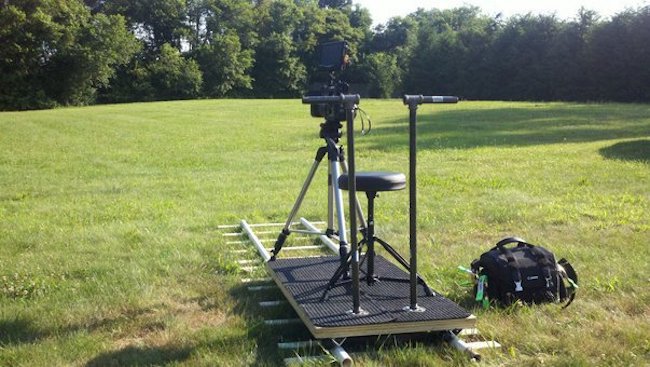
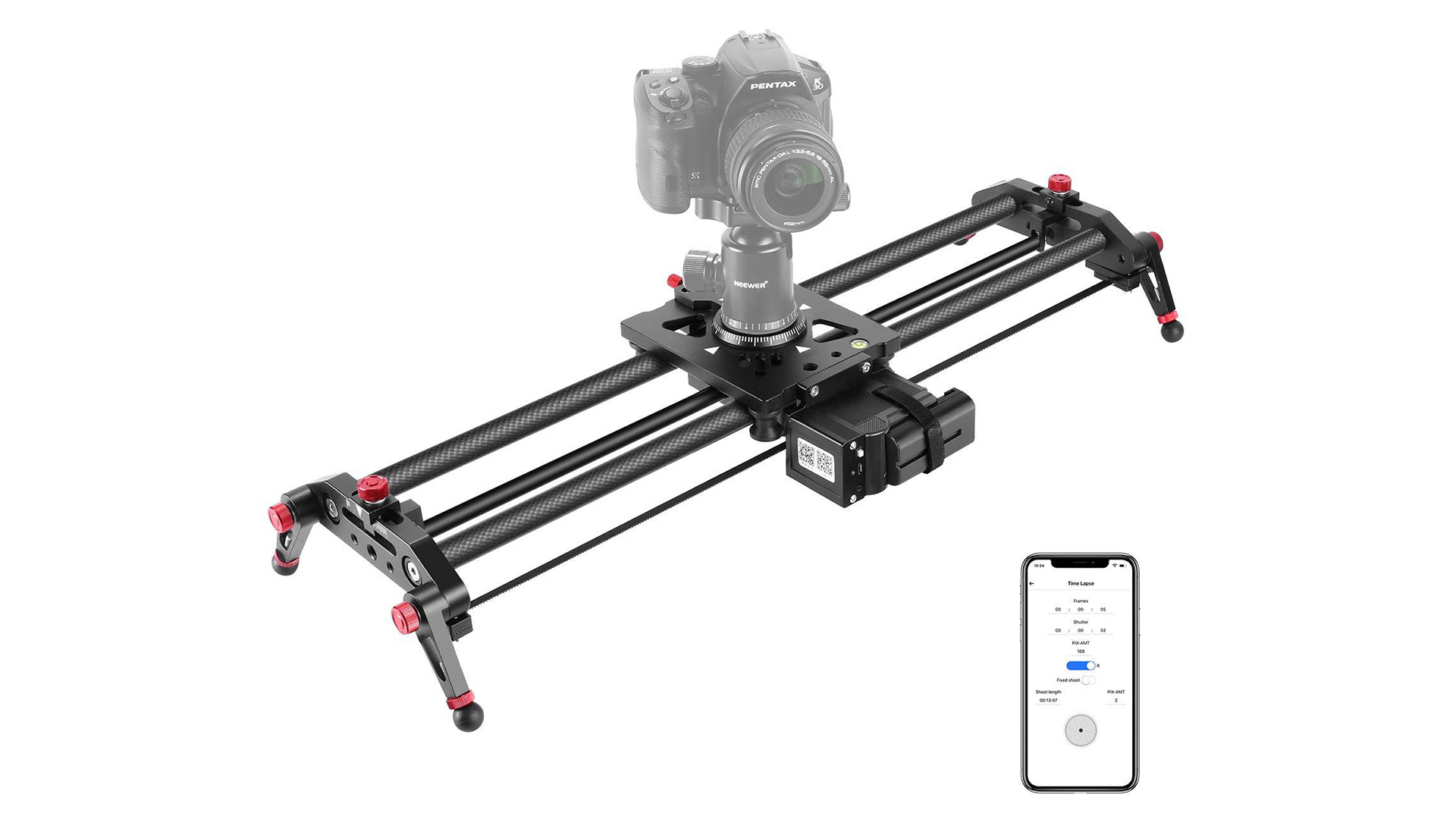
Review: We take a look at a smartphone controlled motorised slider that costs $160. What's the catch?
Rewind the clocks. Ten years ago motorized sliders, and motion control were all the craze, and commanded a hefty price tag to go with them. For a decent motorized slider that created a back & forth motion, time lapse control, and perhaps a parallax effect, you were easily looking at spending anywhere between five, to ten thousand dollars for a solid system. Mind you, back then digital motors were not as quiet as they are today, so that was also problematic for interviewing. I always coveted the effect of a subtle sliding motion, but could never stomach the price tag for such a simple concept. Of course I could have bought one at those prices, it was just that the ultimate worth did not warrant the cost of admission. So with a little ingenuity, I invested in two DIY systems (more on that later), and finally just gave up on them when 3 axis stabilizers came along. Flash-forward to 2020, we now finally have motorized sliders at reasonable, even measly pricings.
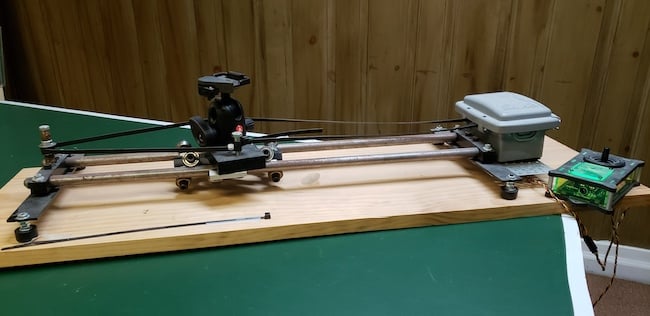
One of my old DIY sliders I built with a servomotor, rods and a belt.
The $160 Neewer Motorized Slider in action!
In enters the Neewer Motorized Slider. Even to this day I’ve been reluctant to purchase a motorized slider because I struggle to weigh it’s worth in my day-to-day operations. Taking this into consideration, when I saw this sale hit my desk for this particular slider at a whopping $160, I couldn’t pass it by for the feature sets. This slider runs in at a 31 inch length, comes with carbon fiber rods, and a pan & parallax bar. It’s belt driven, possesses a deadly silent motor, and operates via the Neewer’s “SmartShot” Android / IOS application. Simply setup the device out of the box, bolt on the motor, select your tripod head of choice, and fire up that app to set your in & out points. The simplicity of it is astounding, enabling you to move the center bar in either direction by the millimeter, and tighten it down for the desired center tracking, or pan effect. The sled is simple and smooth. Only the slightest nudges, or bumps occur when operating at 100% at each end of the rail.
Example of the Neewer Motorized Slider in a mock interview scenario.
I’m a firm believer in you get what you pay for, and unfortunately more often than not you get less than what you were promised. That said, every once in awhile you find an incredible value for very little cost, and this is precisely what this kit provides. The build quality is outstanding, being nearly an all-metal design. The mounting points are numerous to provide a number of options whether that be 1⁄4 inch or 3/8th in the center, or respective ends of the slider. It comes with a bag for the rails, and a case for the motor. While this is less than convenient to have to strip the motor from the unit for transport, I suspect I could find a better bag, or case for this at a later date. Ultimately, I picked this up for a looped center target parallax effect to intercut with my A-Cam for interviewing, and I’ve been very pleased with the results.
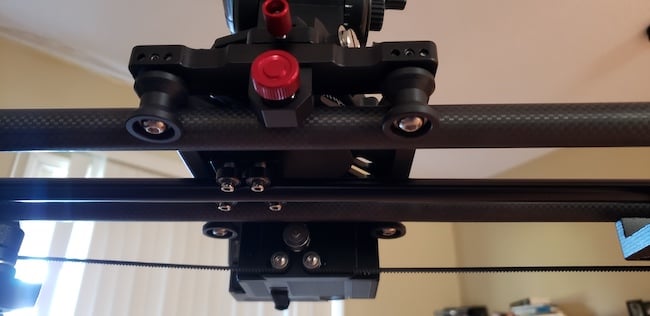
The slider isn’t perfect. If I were to be picky, it is a little cumbersome to setup, and breakdown. The app also requires you to set the in & out points each time you fire it up. The app could be killed accidentally, and thankfully the slider will continue its motion in a permanent loop until otherwise commanded to stop. It’s more of an analog / mechanical like affair with a digital touch to it. You want to be cognizant of a tight tension on the belt, along with a solid tripod head to dampen any vibrations. Don’t expect to put a metal ball head on this and have a vibration free affair. You want to have a big base as close to the center of gravity as possible. This will ensure jolts, or the tiniest imperfections are effectively absorbed by the tripod head. You’ll also want to use two stands on either end of the slider for your mounting solutions, or invest in a pair of slider support arms that clamp to a center mounted tripod.
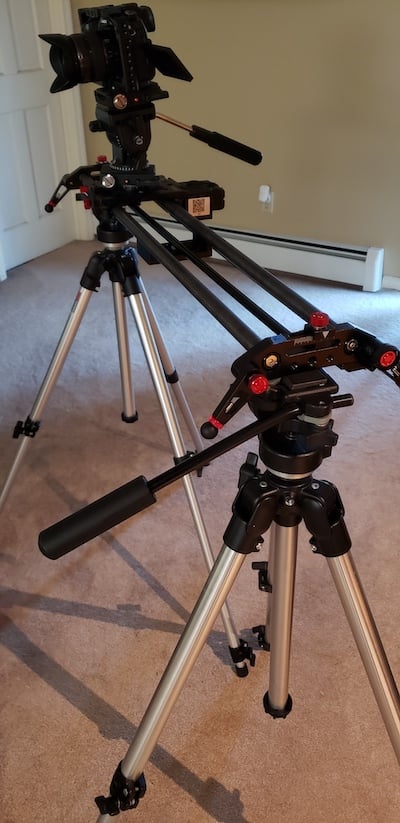
This brings me to me overarching point. We now live in an age where technology that was once reserved for the elite, are now reaching the hands of the everyday shooter. Technology I saw ten years ago that I said to myself “this seems so simple”, and I took the steps to build for myself at an 8th of the cost, are now coming into reality as to their true worth on the market. If “present me” could go back in time, and tell “past me” that those drones you built for $14k are now microsized at under a $1,000 with far better tech, I wouldn’t believe myself... but lo and behold, here we are!
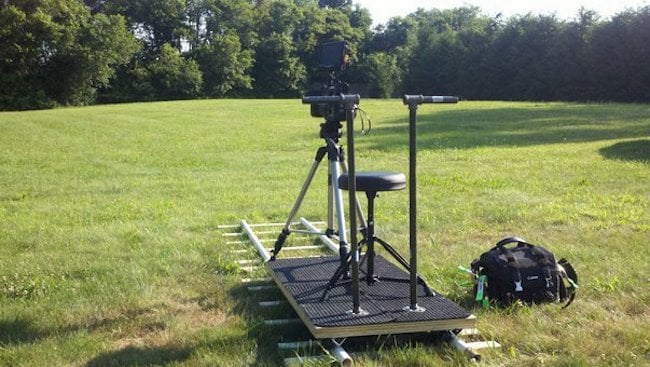
My first attempt into DIY sliders, I constructed a moving platform on skateboard wheels.
The democratization of technology is upon us, and it’s absolutely wild what sort of tech that once commanded thousands of dollars are now sitting at a few hundred bucks. It’s a great time to be a filmmaker in that regard, but I suspect this applies an exorbitant amount of pressure for manufacturers to put new spins on product to justify profit margins of days since passed. In closing, not every product at these staggeringly low costs are going to work for everyone. With reasonable, or considerably low expectations, every once in awhile you might just be surprised by what is available in the “bargain aisle” of the internet. Do you have equipment that you picked up at a great bargain that has met, or exceeded your expectations? Let us know in the comments below!
Tags: Production


Comments